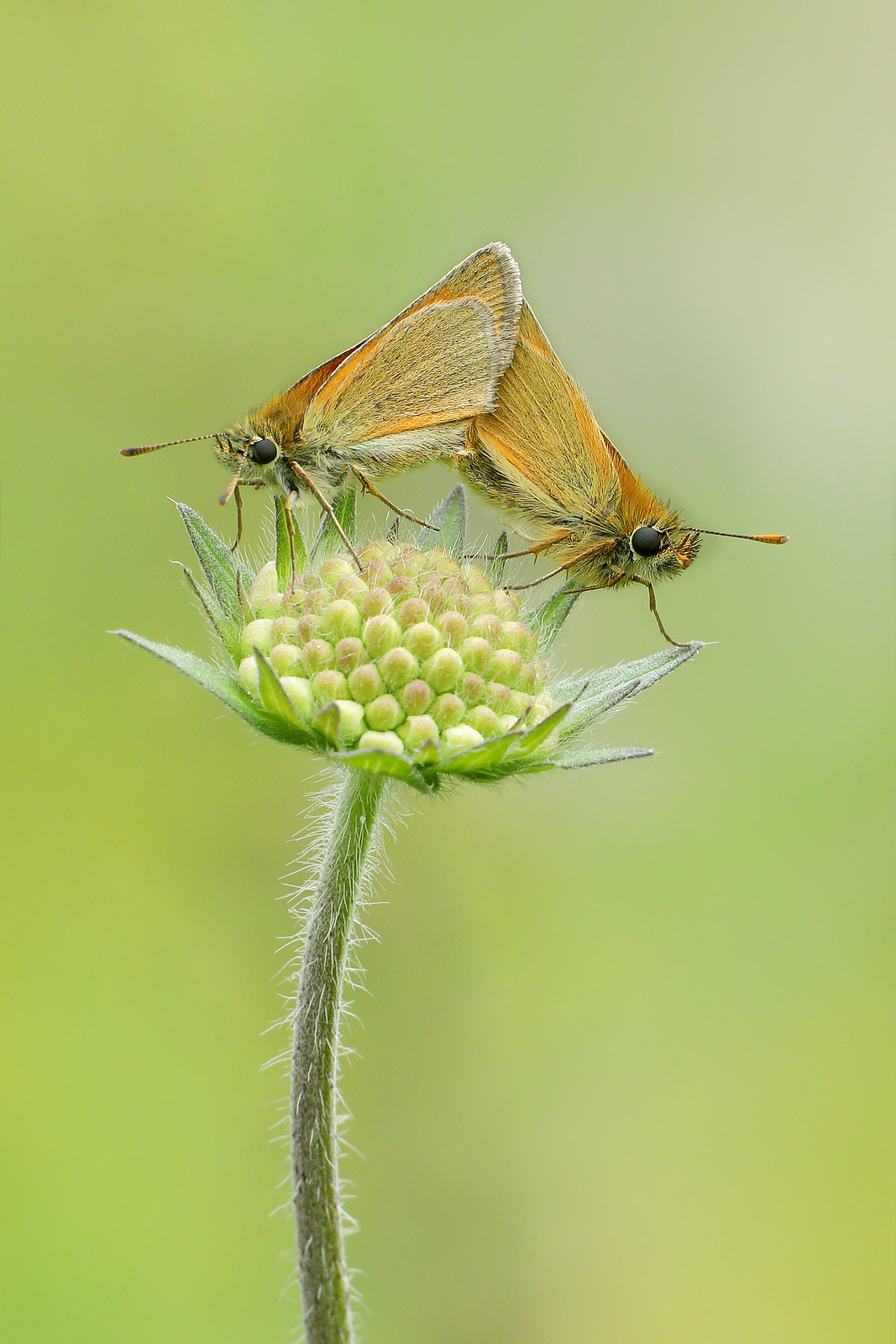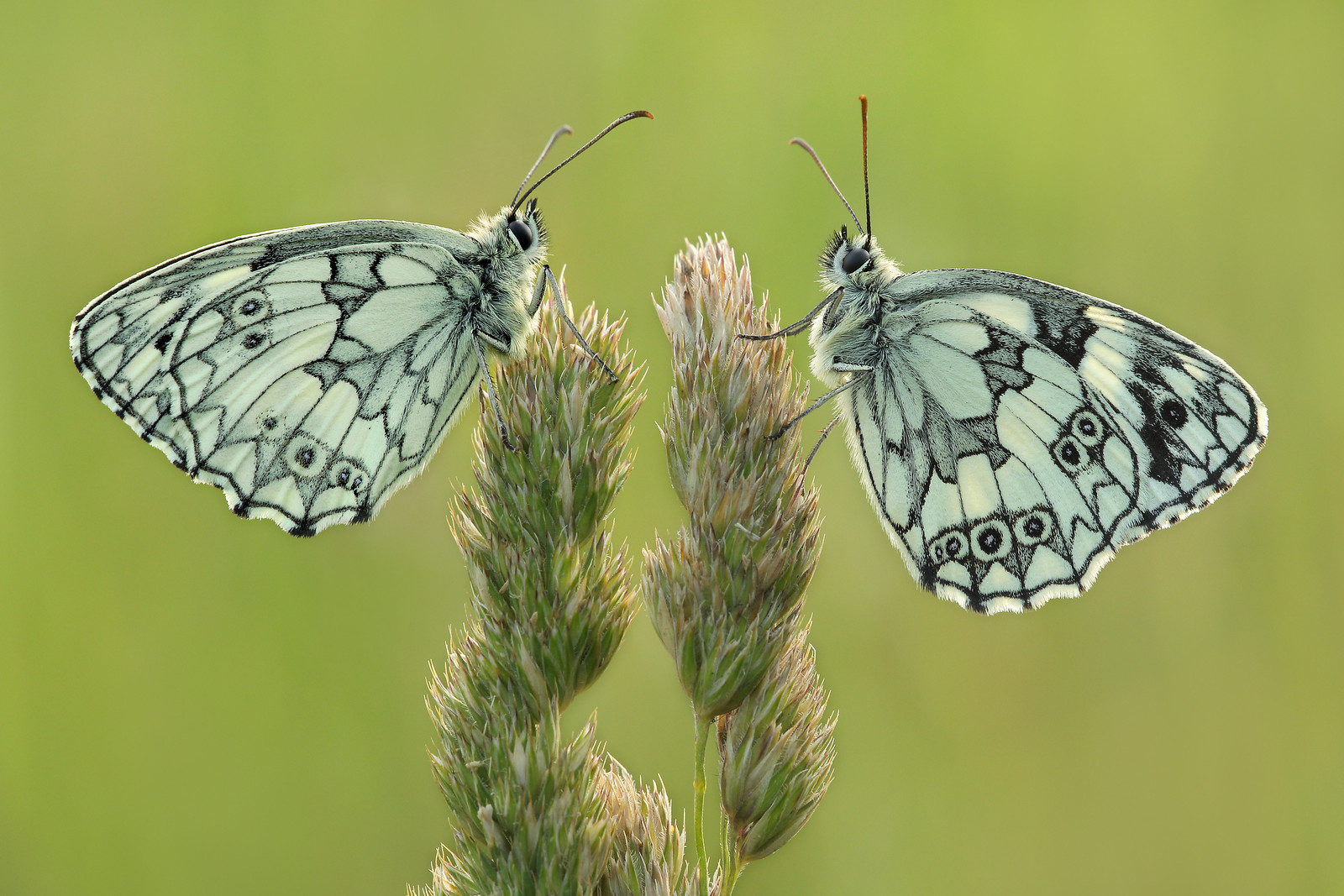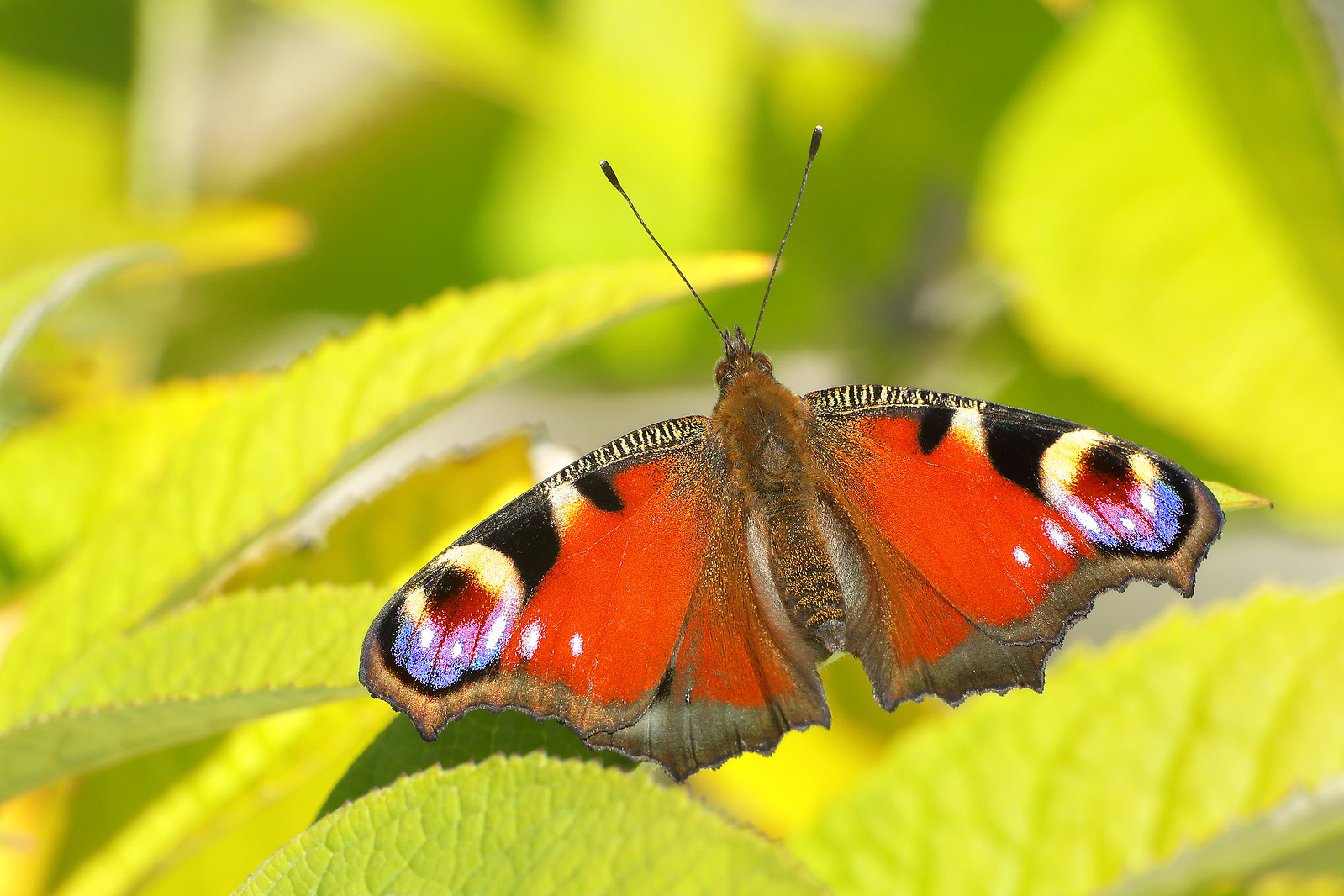The Sussex Butterfly Safari 2020
Welcome to my summer butterfly project for 2020, which, like my Roe deer essay last month, was completed by travelling many miles on my bicycle from one end of Sussex to another. Locations include the Knepp Estate, Malling Down Nature Reserve, Castle Hill National Nature Reserve and Friston Forest. The summer butterfly season is always something I look forward to, despite the intensely farmed, vandalised UK only having 59 species, many of which are hard to find. I had booked leave for the Orange Tip and Pearl-bordered Fritillary this spring, but the UK was in lockdown and sadly I missed out. It was just as well I'd spent time on butterflies before my holiday. Although my first visit to Knepp took place in hot, sunny weather, conditions deteriorated a few days later, as gales swept across the country. The weather improved just as my time off ended, forcing me to use spare evenings and days off to complete the project.
Big Butterfly Count.
Big Butterfly Count.


The Purple Emperor will be familiar to any UK butterfly enthusiast, but many people will have only vaguely heard of the species. Open-winged males are an iridescent blue when the sun is at the right angle, while females are brown. Many wildlife photographers would place getting a high quality shot, especially open winged males, near the top of their lifetime bucket list. It is very elusive and mostly confined to oak woodlands with accompanying Goat Willow and Grey Willow in central southern England. Adults feed on aphid honeydew, although they occasionally land on paths to feed on essential minerals. They love fresh animal dung or anything revolting. Males are very aggressive and territorial and will attack anything from each other to medium-sized birds.
My favourite place to spot Purple Emperors at the Knepp Estate in West Sussex, is towards the top end of a north-south path, where the oak trees are much younger and smaller. Although the Purple Emperor is the UK's second largest butterfly, you still need to be fairly close, even with 700mm of focal length at your disposal. High temperatures and easterly winds on 24th June 2020 led to the butterflies perching on these lower, west-facing branches. My arrival after 4pm meant I was well placed to observe them bathed in early evening sunlight. Last year, I tried and failed to photograph the Emperors in south-westerly winds, because I was looking in the wrong place! The butterflies would have been perching on the east-facing branches, but my novice thinking couldn't grasp that. Given the elusive nature of Purple Emperors, most photographers, including myself, have developed low expectations of what we can achieve. The majority of images we take are low resolution, record shots of Emperors high in the trees. Few photographers therefore eagerly exchange contact details to share each other's work. I was thrilled to get a side-profile shot to my standard on this special occasion and I hope the people I met see it.
My favourite place to spot Purple Emperors at the Knepp Estate in West Sussex, is towards the top end of a north-south path, where the oak trees are much younger and smaller. Although the Purple Emperor is the UK's second largest butterfly, you still need to be fairly close, even with 700mm of focal length at your disposal. High temperatures and easterly winds on 24th June 2020 led to the butterflies perching on these lower, west-facing branches. My arrival after 4pm meant I was well placed to observe them bathed in early evening sunlight. Last year, I tried and failed to photograph the Emperors in south-westerly winds, because I was looking in the wrong place! The butterflies would have been perching on the east-facing branches, but my novice thinking couldn't grasp that. Given the elusive nature of Purple Emperors, most photographers, including myself, have developed low expectations of what we can achieve. The majority of images we take are low resolution, record shots of Emperors high in the trees. Few photographers therefore eagerly exchange contact details to share each other's work. I was thrilled to get a side-profile shot to my standard on this special occasion and I hope the people I met see it.
I had hoped the butterflies would land on the ground to drink soil minerals, but activity from the small, friendly group that had formed around me deterred them. Even 'good' UK sites like Knepp, have very low numbers of Purple Emperors, compared to other European countries. In Ukraine, there are recordings of fifteen Purple Emperors landing on a single dead frog. Another photographer poured a revolting fish paste concoction on the path as bait, but to no avail. Grounded Purple Emperors, like any other butterfly, can be easily disturbed by the over-eager observer. I have never seen one grounded, but I have a specific plan to wait until the butterfly's proboscis is out before I move closer. A feeding butterfly is a preoccupied butterfly. Only then is it safe to make an approach.

Despite strong winds and sunny intervals persisting into Thursday 2nd July, I cycled off to Friston Forest in search of more butterflies. All photographers make mistakes and I am no exception — forgetting on this occasion to put the memory cards back in my camera! I knew this would happen eventually and I always keep spare 32GB and 16GB backup cards zipped away in my bag, which never get used, except when I'm 18 miles from home on a bike in the middle of a forest.
I noticed a decent sized colony of Dark Green Fritillaries in a meadow surrounded on all sides by tall beech trees. I will now earmark this meadow as a reliable site for this species. It has the advantage of being a relatively small space, where the butterflies are constricted by geography. In open meadows, this powerful flier can travel a good 100 metres when disturbed, leaving the photographer high and dry. Both sexes were very active, flying from one Knapweed to another, with the females (seen in all 3 photos) periodically basking open-winged near the ground, to attract mates.
The Dark Green Fritillary is a habitat specialist, which means it usually isn't found in the open countryside or in private gardens. Although its distribution is widespread, you will only see the species at sites which support it. It feeds on the Common Dog Violet, Hairy Violet and Marsh Violet. As you can see here, it likes the Knapweed and both sexes spent hours feeding on them. I have also seen them feeding on buddleia at Malling Down.
The Dark Green Fritillary is a habitat specialist, which means it usually isn't found in the open countryside or in private gardens. Although its distribution is widespread, you will only see the species at sites which support it. It feeds on the Common Dog Violet, Hairy Violet and Marsh Violet. As you can see here, it likes the Knapweed and both sexes spent hours feeding on them. I have also seen them feeding on buddleia at Malling Down.

The final day of my holiday just had to be calm, sunny and warm, didn't it? I was planning to visit the Knepp Estate to look for an open-winged male Purple Emperor, but I was advised not to travel. This species roosts in the treetops. Sadly the Purple Emperor lacks the capacity to anticipate mortal danger and most adults at Knepp will have been killed to pieces by the recent nocturnal gales. The 2020 Purple Emperor season at the exposed Knepp site was a disaster, with prospects looking bad for 2021. I was therefore very fortunate in booking my holiday for late June and visiting right at the start of the season. Instead, I rocketed off to Friston Forest, and spent three hours photographing male Dark Green Fritillaries before returning home. There were about 20 of the Dark Green Fritillary and over 50 Marbled Whites, plus two mating Small Skippers and three Small Coppers.
The ride to Friston Forest — along Brighton seafront, under the cliffs to Saltdean, through a nature reserve between Newhaven and Seaford and finally down towards the Cuckmere Valley — is a picturesque incentive to ride more often. Having dropped from 95kg to 78kg since January, I can cycle non-stop to Seaford before needing a break. Let's also not forget the therapeutic effects of being close to nature. Having been absent from Friston Forest since last July, I wanted to cycle around the glades for another hour, instead of going home early because I had work in the morning.

With at least the next ten days looking warm and sunny, I felt a sense of urgency to get on my bike and visit Friston Forest again. While I was away, my computer copied 2.5 terabytes of images from an existing external hard drive to a new 5 terabyte drive. I keep three external hard drives off-site in case my primary drives fail or are destroyed. External hard disks with a capacity of 5 terabytes can be purchased in the UK for £95. I would advise any photographer to buy at least two drives and keep one off-site. This is a small price to pay for peace of mind. Imagine having your life work on a single computer and losing all your data in a theft, fire, flood or hardware failure.
The wind at Friston Gallops was stronger than expected, so I made my way back into Friston Forest. Very few roe deer manage to elude the corner of my eye and sure enough, despite her best effort at remaining still, the visual anomaly of her beautiful face caught my attention straight away. The doe was obviously quite used to seeing humans and probably expected me, like most other visitors, to just continue walking. At one time, Roe deer were so elusive in Friston Forest, that some local people thought the sightings were 'a joke' that had been fabricated by 'quacks and weirdos'. I would occasionally spot them myself in the early 2010s, but they were timid creatures. I visited the forest several times in summer 2019 and I saw them so frequently, that Friston Forest can now be classed as a reliable site for Roe deer. I was pleased that the doe felt relaxed enough to look away from the camera, as all too often, the presence of a photographer makes the deer nervous, resulting in the animal unnaturally looking straight back at the camera.
The moderate breeze finally dissipated before sunset, leaving still air at Friston Gallops. There were two Marbled Whites (male and female) roosting on a wild carrot. 2020 was a good year for Marbled Whites, but poor for Chalkhill Blues. The north end of Friston Gallops was teeming them in 2019, but numbers were down this year. The two male Marbled Whites below were photographed at Castle Hill National Nature Reserve in late June.





A large group of buddleias attracts colourful summer butterflies at Malling Down Nature Reserve, near Lewes in East Sussex. The westerly aspect is ideal for evening shooting, but the wind needs to be calm. On the two occasions I visited, beautiful Peacocks nectared uninterrupted on abundant flowers, since the aggressive, territorial Red Admirals often seen here were completely preoccupied for the same reasons. This is my go-to local site for the Peacock. I might occasionally see a Wall Brown and Dark Green Fritillary.


Big Butterfly Count






Comments